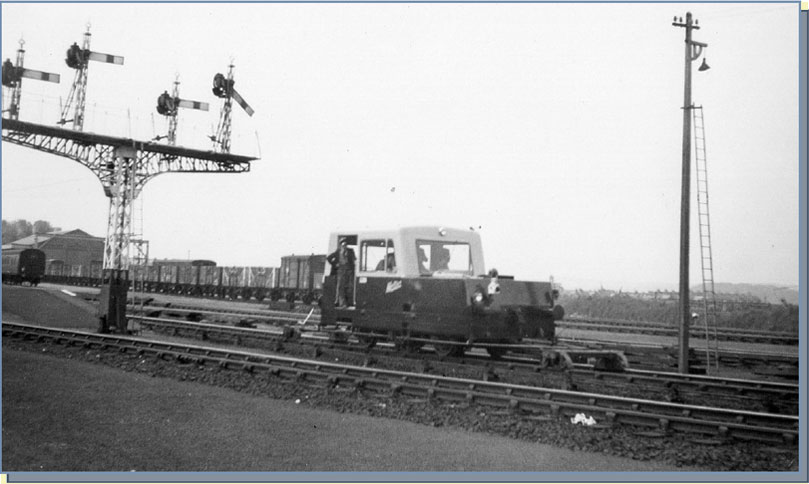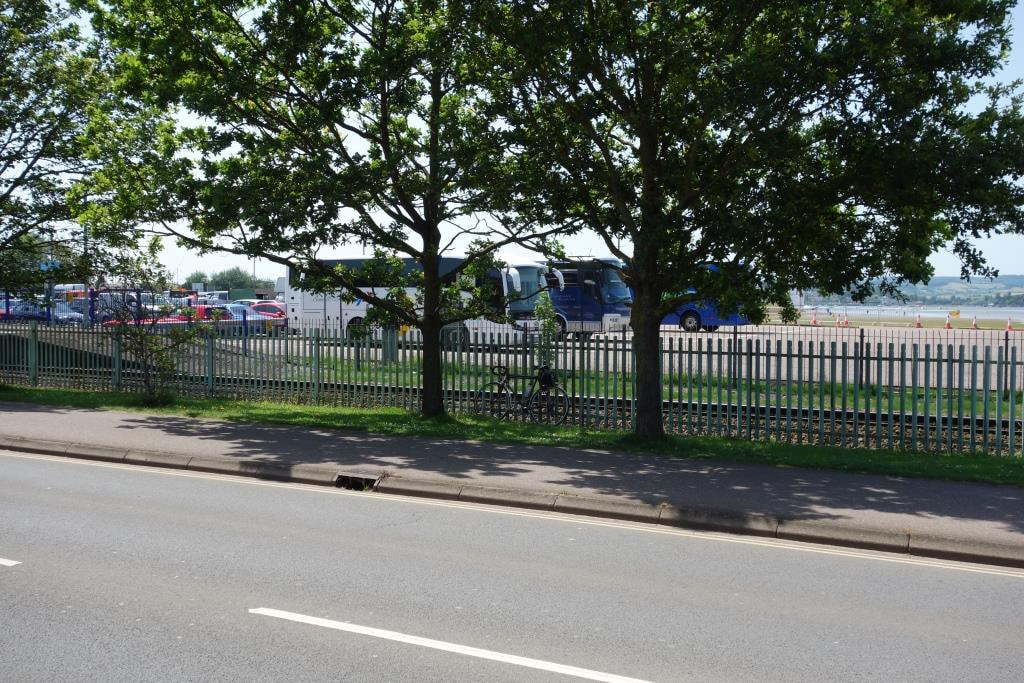The movement of track recording trolleys was always shown on notices, along with the special conditions which took account of the trolleys’ characteristics, whether recording or running “light.”
When Tony Hill asked his old pals if any of them had kept such a notice, Stephen Derek, a former B.R. manager, was prompted to reply: “On reading this, I recalled an early photo I’d taken of a ‘Swiss Matisa Track Recording Machine’ leaving Exmouth, for Exeter, on Sunday 8th May, 1960, a few months following my transfer to the Trains Office at Exeter Central.”
If Stephen were to take up that same position at the boundary fence today, he would be standing on the far side of Marine Way, part of the road expansion works that necessitated the virtual destruction of the station. But, in 1960, looking at the Southern’s grand rail gateway to Exmouth of 1924, few could have guessed what the future held.
The trolley is leaving platform one in full recording mode, with probably an Exmouth Junction Driver acting as Pilotman standing at the door; being a steam man, he may have found the cab too confined.
The line in the foreground served platform two, part of which forms the pocket station in use today.
To the left were platforms three and four. There was a space between the lines serving platforms two and three which must have been left for an engine release road, but this was filled with beds containing flowers and shrubs. The space was wider still immediately in front of the camera to allow for the box (right of camera), with its “bridge” where the signalmen gave and received the tokens for the two single line branches.
At the end of each platform were lattice-work bracket signals which, as in the one seen, could allow a train to proceed from each platform to either the main (Exeter) or branch (Budleigh).
In the background can be seen the goods shed, while out of sight are the loco shed, platform canopies and fine frontage, and the harbour branch.


